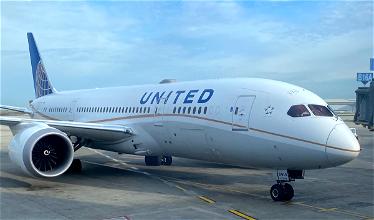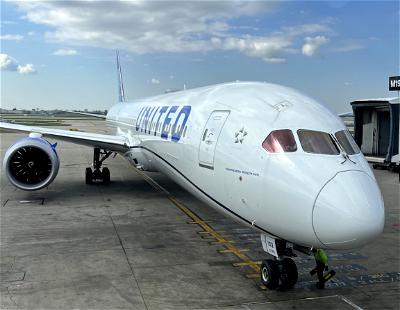The United States Department of Transportation (DOT) just levied a pretty significant fine against United Airlines related to tarmac delays.
In this post:
United Airlines fined for 25 excessive tarmac delays
United Airlines has agreed to pay a $1.9 million civil penalty over failure to adhere to the DOT’s policy around tarmac delays. Specifically, airlines have to develop plans to give passengers the option to deplane when there are extended delays — planes can’t remain on the tarmac for more than three hours on domestic flights or four hours on international flights.
An investigation determined that between 2015 and 2019, United Airlines had 25 flights with lengthy tarmac delays, impacting a total of 3,218 passengers. As far as the distribution of these flights go:
- There were 14 days that had a single flight in violation of the rules
- There were three days that had two flights each in violation of the rules
- There was a single day that had five flights in violation of the rules
A vast majority of these instances involve flights that were diverted to another airport due to severe weather, where there was no option to deplane. That’s why some of these flights are bunched together.
Of the $1.9 million civil penalty:
- $950,000 must be paid within 30 days
- $750,000 shall be credited to United for compensation to passengers — compensation should be 100% for cash refunds, 80% for vouchers or travel credits, or two cents per mile for mileage tickets
- $200,000 shall be credited to United to develop and implement a diversion management tool that improves United’s overall situational awareness of systemwide diversions

What United Airlines has to say
United Airlines notes that this investigation covers five years of flights, and only 25 out of nearly eight million flights have been determined to be in violation of the DOT’s rules.
United is freely entering into a settlement with the DOT, but doesn’t agree with the DOT’s description of the flights. Furthermore, United doesn’t believe that a separate violation occurs for each passenger onboard, but rather United believes penalties should apply on a per flight or per day basis. However, in the interest of settling this matter, United has agreed to pay this penalty.
I think both the DOT and United have valid points here:
- The tarmac delay rules are necessary, because prior to them being implemented, we much more regularly saw lengthy delays without the opportunity to deplane
- At the same time, 25 violations across five years and eight million flights hardly highlights a systematic problem at United
- These diversions get very complicated — often diversion airports don’t have enough gate space for each plane to offload passengers, and for that matter the crew could time out if the door opens, in which case the flight could be canceled and passengers could be stuck somewhere that isn’t their destination
- Still, the rules are the rules, and it’s otherwise way too subjective (and a slippery slope) to determine which flights are worthy of a fine, and which aren’t

Bottom line
United Airlines has agreed to pay a $1.9 million fine related to 25 excessive tarmac delays over a period of five years. Most of these violations involved flight diversions due to bad weather, where a plane was stuck on the ground for an extended period of time, often without access to gates.
I don’t think this penalty signifies some major problems at United when it comes to managing delays, I imagine this will cause United to work further to ensure this doesn’t happen in the future.
What do you make of the DOT finding United over tarmac delays?





Diversion airports have always been a space to accommodate issue. I suggest airports along with the various airlines work out a plan to move later loading planes or cancelled flight planes away from their gate position and make that gate open. Yes, that's correct! Open to a jet from a competing airline. After all it's the passenger who ultimately benefits from this kind of arrangement. Price is not always the determining factor upon which "who...
Diversion airports have always been a space to accommodate issue. I suggest airports along with the various airlines work out a plan to move later loading planes or cancelled flight planes away from their gate position and make that gate open. Yes, that's correct! Open to a jet from a competing airline. After all it's the passenger who ultimately benefits from this kind of arrangement. Price is not always the determining factor upon which "who you fly with". Price, comfort and on time scheduling all factor into the decision. Seems like DOT, FAA and all airlines might just have a solution that might be fairly simple to implement.
Kamala is trying to curry favor with Buttigeg to get the DOT and feds in on Gavin Newsom’s bribery scheme with UAL in California.
Sad to see Californians running the show and corrupting the federal government.
What's the point of these fines if the money DOT receives from United is also the bailout money from the government.
Since it wasn't DOT who was stuck on the tarmac, maybe the whole amount should go to the passengers. Especially the '80% for vouchers or travel credits' or 'two cents per mile' part. This is the real slippery slope.
And the joke "$200,000 shall be credited to United to develop and implement a diversion...
What's the point of these fines if the money DOT receives from United is also the bailout money from the government.
Since it wasn't DOT who was stuck on the tarmac, maybe the whole amount should go to the passengers. Especially the '80% for vouchers or travel credits' or 'two cents per mile' part. This is the real slippery slope.
And the joke "$200,000 shall be credited to United to develop and implement a diversion management tool that improves United’s overall situational awareness of systemwide diversions" might as well call it as a settlement discount.
A pittance compared to the $7.7 billion in bailout money UA got from the government. And Kirby continues to stroke this administration in hopes of getting additional subsidies.
UAL has to pay half of the fine in cash within 30 days but the other half has to be used to upgrade systems in United's operations control center to prevent this type of thing and to ensure there is adequate communication.
This is indeed a low number of flights as a percentage of what United operates. The question is likely not the number of flights but the processes and apparently that the DOT...
UAL has to pay half of the fine in cash within 30 days but the other half has to be used to upgrade systems in United's operations control center to prevent this type of thing and to ensure there is adequate communication.
This is indeed a low number of flights as a percentage of what United operates. The question is likely not the number of flights but the processes and apparently that the DOT does not believe UA has sufficient controls in place to make sure customers are adequately informed and cared for during lengthy ground delays.
The DOT's Air Travel Consumer Report includes a section on tarmac delays so you can see how well UA does compared to other airlines - but you have to look at the list each month because they do not sum the statistics as they do for other metrics like on-time.
I disagree on UA doesn't have sufficient controls. It's UA best interest to operate efficiently.
United ops probably spend millions to ensure that this doesn't happen.
The problem that can't be solved is predicting the future. I'm sure most if not all of these violations are incremental delays that add up to a violation. (Think 60 mins delay extended 3 times or the deice was slow and backed up)
Believe me the crews...
I disagree on UA doesn't have sufficient controls. It's UA best interest to operate efficiently.
United ops probably spend millions to ensure that this doesn't happen.
The problem that can't be solved is predicting the future. I'm sure most if not all of these violations are incremental delays that add up to a violation. (Think 60 mins delay extended 3 times or the deice was slow and backed up)
Believe me the crews don't want to get stuck in their office any longer than you do.
The money for United to invest is just like paying your child to do their already finished homework.
I'm simply relaying what the DOT said, not my opinion.
Perhaps they will level fines on other airlines or maybe they saw something about United that they thought needed to be addressed.
As I'm sure you know, many government fines to business have a corrective element and require using part of the fine to change processes.
United has the dual advantage / disadvantage of operating many of its hubs in operationally challenging airports, when weather and construction cause big problems (EWR, ORD, SFO principally). In spite of its marketing spin, and significant improvements, UA still runs a messy operation and seems to have more delays overall than DL and AA.
well said. United also has more of its operation in northern tier airports than Delta and American.
being in larger markets used to be an advantage if United could maintain a strong base of business passengers but the growth of low cost carriers in United hubs - at Newark, Chicago, Houston, and Denver - as well as a likely reduction in business travel will hurt United.
United does try but has some structural challenges...
well said. United also has more of its operation in northern tier airports than Delta and American.
being in larger markets used to be an advantage if United could maintain a strong base of business passengers but the growth of low cost carriers in United hubs - at Newark, Chicago, Houston, and Denver - as well as a likely reduction in business travel will hurt United.
United does try but has some structural challenges including that Newark is no longer slot controlled in large part because United did not use its slots to required levels and also because EWR pushes a lot more metal through a smaller amount of runway space than JFK or even LGA considering that LGA doesn't hardly handle widebodies.
I wish they also published how United compared to Delta and American Airlines during that 5 year span. Yes 25 flights out of over 8 million seem insignificant. However, if United's competitors have 0 flights out of 8 million excessive tarmac delays, then DL and AA are doing something right that United clearly isn't doing from a passenger perspective.